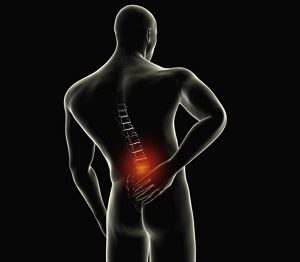
What is a Lumbar Sprain?
Lumbar (low back) sprains are one of the most common causes of low back pain. A lumbar sprain is characterized as an injury to one or more ligaments (tissue that connects adjacent bones) in the lower back. It can have different levels of severity, including stretching and partial or complete tear of ligaments from their attachment site. Lumbar sprains often result from activities that exert excessive physical stress on the lower back or lumbar spine (L1-L5).
Causes of Lumbar Sprains
Lumbar sprains may occur as a result of:
- Excessive flexion (bending forward)
- Excessive extension (bending backward)
- Twisting motions
- Heavy lifting or improper lifting
- Improper movement
- Fall
- Trauma
- Poor posture or body mechanics
- Sports activities
- Motor vehicle accidents
- Lumbar instability
- Inadequate warm-up before exercise
Several other factors can also cause lumbar sprains, including excess weight, pregnancy, physical inactivity, and an unhealthy lifestyle.
Symptoms of Lumbar Sprain
Some of the common symptoms of lumbar sprain include:
- A localized pain in the lower back
- Sharp pain that occasionally radiates to the buttocks or legs, causing greater discomfort
- Significant problems with mobility, whether leaning forward or standing up after sitting
- Increased pain during exercise or pain that is aggravated by movement
- Stiffness in the lower back
- Tenderness over the affected region
- Muscle cramping or spasms
Diagnosis of Lumbar Sprain
Your physician will arrive at a diagnosis and determine the cause of pain based on your medical history and a physical examination. Your physician will ask questions about your pain, how the injury occurred, what the symptoms are, and what makes the symptoms worse. Generally, diagnostic testing is not usually necessary, unless the pain persists for many weeks and is not improving. If the pain persists for long, your physician may order an X-ray or MRI to rule out other possible conditions, such as infection or fractures.
Treatment for Lumbar Sprain
Lumbar sprain is commonly managed with non-surgical treatment without the need for surgery. The non-surgical treatment options include activity modification, ice application, anti-inflammatory and pain medications, muscle relaxants, and rest to avoid worsening the situation. Physical therapy or rehabilitation, along with chiropractic, acupuncture, and massage therapy, may also be good alternatives to relieve pain connected with a lumbar sprain. To enhance the success of your treatment, your doctor may combine two or more treatment modalities.
Prevention of Lumbar Sprain
Some of the preventive measures that can help prevent lumbar sprain include:
- Maintaining a healthy body weight
- Eating a healthy well-balanced diet
- Practicing good body mechanics when lifting objects, sitting, or standing
- Regular stretching and strengthening exercises to keep your muscles in good condition and joints flexible
- Using safety measures that help in preventing falls, such as wearing footwear that fits properly, and keeping walkways and stairs free of clutter
- Abstain from smoking, as nicotine interferes with blood flow to the muscles
